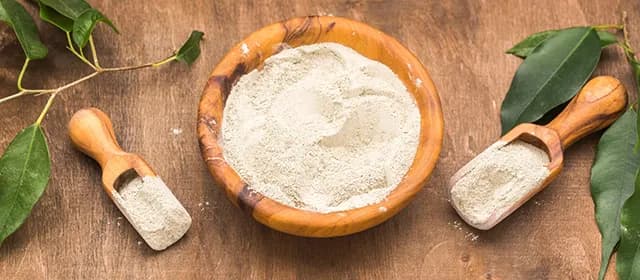Alcohol components are crucial in determining the quality of products, their attraction to consumers, and their operational efficiency in the dynamic global beverage sector. The flavor, aroma, and general consumer experience of beverages are all directly impacted by the selection of raw ingredients, additives, and processing techniques. These decisions also have an impact on production costs and regulatory compliance.
For industry leaders, understanding the nuances of alcohol ingredients is crucial not only for maintaining consistent quality but also for innovating products that meet shifting consumer demands. The global alcohol ingredients market is set to grow at a CAGR of 7.19% from 2025 to 2032, as per report published by Kings Research. As competition intensifies, strategic decisions regarding ingredient sourcing, technological adoption, and sustainability practices have become vital determinants of market success.
What Are the Key Ingredients in Alcohol Production?
The elements that go into making alcoholic beverages combine to provide unique flavors and textures. Fermentable sugars derived from fruits, grains, or other botanical sources are core components because they offer the necessary substrate for yeast activity during fermentation. To maximize fermentation efficiency and yield the intended flavor and aroma, yeast strains are carefully chosen.
To improve taste profiles and set items apart in a crowded market, other additives like botanicals, spices, and natural extracts are added. While preservatives and other stabilizers are used to prolong shelf life and uphold quality standards, water, which is frequently disregarded, is essential to the balance and uniformity of beverages. Making a beverage that satisfies customer expectations and legal standards requires careful ingredient selection, sourcing, and management.
How Are Alcohol Ingredients Sourced Globally?
The sourcing of alcohol ingredients is a complex endeavor influenced by geography, climate, economics, and global trade dynamics. Certain ingredients, such as agave for tequila or juniper berries for gin, are tied to specific regions, creating dependencies on local agriculture and seasonal availability. For example, in 2023, Mexico had 571,608 hectares of organic-certified land, with 60% dedicated to harvesting or collection of crops like agave, illustrating how regional production directly impacts ingredient availability (source: https://apps.fas.usda.gov/).
Similarly, juniper berries, essential for gin production, are studied closely by the USDA Agricultural Research Service to monitor seed viability and regional insect impacts across sites in California and Nevada.
Global supply chains for grains, fruits, and botanicals are increasingly susceptible to disruptions caused by climate variability, geopolitical tensions, and trade regulations. U.S. corn growers, for instance, produced 14.2 billion bushels in 2020, a 4% increase from 2019, while U.S. wheat production totaled 1.83 billion bushels in the same year, reflecting fluctuations that can influence global grain supply for spirits production (Source: https://www.nass.usda.gov/Newsroom/archive/2021/01-12-2021a.php). In the fruit sector, the U.S. produced 15.4 million tons of noncitrus fruits in 2020, while strawberries alone accounted for over $2 billion in farm gate sales, highlighting the significance of fruit sourcing for liqueurs and flavored spirits. In addition, botanicals such as herbs and spices, critical for flavoring spirits, are a significant sector of U.S. horticulture.
In response to these challenges, many industry leaders are prioritizing sustainability and ethical sourcing, adopting practices such as environmentally conscious farming, fair-trade partnerships, and traceable supply networks. These approaches not only mitigate the risk of shortages or quality inconsistencies but also enhance brand credibility in an era where consumers increasingly value transparency and responsibility in ingredient sourcing.
Which Innovations Are Shaping Alcohol Ingredients Today?
Advances in food science, changing customer preferences, and the need for product differentiation are driving innovation in alcohol ingredients. The increased emphasis on health and wellness among consumers is reflected in the obvious trend toward natural and organic components. To appeal to health-conscious markets, functional additives, such as botanicals with alleged health benefits, are being added. Unique flavor profiles and high-end products are being made possible by alternative fermentation methods, such as co-fermenting different fruit or grain varieties.
Furthermore, technology-driven methods for processing ingredients, including precision distillation or enzymatic treatments, are improving productivity and quality control while enabling the testing of new formulations. These developments give businesses the chance to stand out from the competition, cater to the needs of specialized markets, and differentiate their goods.
Why Is Quality Control Critical for Alcohol Ingredients?
Since quality control has a direct impact on product safety, uniformity, and compliance, it is essential to the management of alcohol constituents. Upholding strict quality standards guarantees that every batch of beverages satisfies predetermined standards for flavor, aroma, and appearance, protecting the reputation of the brand and the confidence of customers. Safety testing, such as chemical and microbiological evaluations, guards against health hazards related to raw materials or processing mistakes and helps avoid contamination.
Furthermore, legal compliance in a variety of markets depends on adherence to regulatory frameworks for ingredient disclosure, allergen labeling, and allowable additive levels. Strong quality control systems, which include testing procedures, supplier audits, and traceability measures, help beverage producers lower production variability, minimize risks, and produce goods that continuously satisfy consumer demands.
How Are Consumer Preferences Influencing Ingredient Choices?
Consumer demand is a major driver of ingredient selection in the alcohol industry. Shifts toward health-conscious consumption have created growing interest in low-alcohol, non-alcoholic, and functional beverages that align with wellness-oriented lifestyles. For instance, the non-alcoholic beer market in Japan was estimated at 40.1 million cases (337 million liters) in 2021, a record high and 15 percent higher than the previous year. The market has grown continuously for seven years and was forecast to grow even higher to 41.7 million cases (350 million liters) in 2022 (Source: https://apps.fas.usda.gov/).
Concurrently, customers are looking for goods with distinctive, potent, and handcrafted flavors, which promotes the use of exotic fruits, spices, and botanicals in product compositions. Due to consumers' preference for goods that exhibit social and environmental responsibility, transparency and ethical sourcing have also grown in importance. In order to stay current, beverage makers need to keep an eye on these developments and modify their ingredient strategies on a regular basis. This will ensure that new product launches meet modern customer expectations while adhering to legal and operational requirements.
Which Challenges Are Industry Leaders Facing in Alcohol Ingredient Management?
For industry leaders, managing alcohol ingredients poses a number of difficulties, from shifting raw material prices to supply chain interruptions. The availability and quality of components unique to a certain place can be impacted by climate fluctuation and geopolitical instability, which can cause uncertainty in production planning. There is additional pressure to maintain profitability while upholding quality standards because to price volatility in commodities including grains, fruits, and botanicals. It takes ongoing attention to detail and flexibility to navigate the complicated regulatory environments of many nations and product categories.
Additionally, maintaining the consistency, authenticity, and traceability of ingredients is still crucial since any compromise may have an impact on customer trust, regulatory compliance, and brand reputation. Therefore, supply chain monitoring, risk management, and strategic planning are crucial for overcoming these obstacles.
How Can Business Leaders Get Ahead of the Trends?
Business leaders can get ahead of the trends by prioritizing innovation, sustainability and resilience. Investing in product development with new ingredients and catering to emerging consumer trends can differentiate brands in a crowded market. Building supply chain resilience through diversified sourcing, partnerships and contingency planning can mitigate disruption risks. Integrating sustainability across sourcing, processing and packaging not only meets consumer expectations but also strengthens brand equity.
By monitoring trends and adjusting ingredient management practices proactively, companies can ensure operational efficiency, regulatory compliance and long term relevance in a fast changing industry.
Conclusion
The world of alcohol ingredients is rapidly evolving due to changes in regulations, consumer habits, and technology. For business-to-business (B2B) leaders in the beverage sector, knowing this is essential to make wise choices regarding product development, sourcing, and marketing tactics. Businesses may stay ahead of the curve, overcome obstacles, and take advantage of opportunities by concentrating on quality control, sustainability, innovation, and regulatory compliance. Beverage makers can produce distinctive, high-quality goods and stay ahead of the competition and market in a complicated and competitive environment by concentrating on alcohol components.




